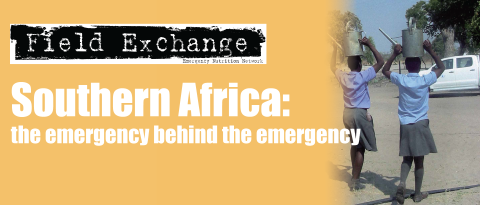Infant feeding in tsunami affected villages in India
Summary of published research1
A recently published descriptive study highlights the problems related to feeding of infants and young children in crisis situations. The objectives of the study were to describe the pre-existing feeding practices of infants and young children among the tsunami affected community and to assess the use of breast milk substitutes donated during the Tsunami and the related morbidity.
One hundred families with at least one child less than 5 years of age were interviewed using a pretested questionnaire over a one month period in four villages of Pondicherry, India. Serial house-to-house visits were made until 25 families were identified in each of the four villages. From these visits, three key informants were chosen for in-depth interviews and another five mothers along with non formal leaders, Youth Club members and social workers of the village forming a total of 10 for a focus group discussion.
Chi square tests was used for statistical analysis of data related to BMS consumption and occurrence of diarrhea.
Out of the 176 children in the study group, 92(52%) were males and 84(48%) females. There were 33 (19%) infants under 1 year and 143 (81%) children in the age group 1-4 years. Among the 100 mothers interviewed, 51% had initiated breastfeeding within one hour of delivery and 23% of them had given sugar water as prelacteal feed to their babies.
Pre-tsunami infant feeding practices
Exclusive breastfeeding for six months was not practiced by 30% of the mothers interviewed2. However, 69% had breastfed their babies for more than a year. Commercial infant formula was used as the predominant complementary feed by 51%, while cow's milk and rice were used by 11% and 38% respectively. Bottles were predominantly used for complementary feeding by 58% while paladai3 and cup were used by 8% and 34% respectively.
Post-tsunami
Within 15 days after the Tsunami, eight (5%) children had chickenpox, 25 (14%) had lower respiratory tract infections, 10 (6%) had dermatological problems and 37 (21%) had diarrhoea. The prevalence of diarrhoea was significantly higher amongst children who had consumed freely distributed BMS (n=27 (73%)) compared to those who had not.
The focus group discussions, key interviews and the interaction with the 100 respondents revealed that 72% of the families had received free BMS, although none of them actually met the WHO criteria to receive it4. The milk powder was provided in polythene packs with the label 'milk powder' and showing ISI mark. However, it was uniformly felt that the powder was of poor quality and mostly consumed by the adults in the family due to fear of diarrhea in children.
Boiled water was used for drinking after the tsunami and all children with diarrhea had received ORS.
Among the 100 mothers interviewed, 67% felt that breastfeeding was affected after the tsunami. Most mothers in the villages studied were under stress and had to move frequently between their homes near the seashore and the temporary relief shelters due to rumours of a further tsunami. Anxiety affected their appetite and many felt that this undermined breastfeeding. However the feeding pattern of the children before and after the tsunami was the same, according to 95% mothers, and 96% of them felt that there was no increased milk powder use after the tsunami.
The authors suggest that inappropriate feeding practices pre and post tsunami probably aggravated the occurrence of diarrhea, along with the inappropriate distribution of poor quality free BMS post Tsunami. As artificial feeding was pre-existing in the study population, the free distribution of BMS after the tsunami did not have much impact on feeding pattern5, and milk powder was used the same way as before. However mothers experiencing difficulties in breastfeeding were at risk of initiating artificial feeding where milk powder was freely available. The authors conclude that intensified health education to address mother's doubts and encourage breastfeeding is needed especially during emergencies but also under routine disaster responses, rather than just in interventions after a disaster.
View the postscript that this article relates to
1Feeding of Infants and Young Children in Tsunami Affected Villages in Pondicherry. Adhisivam B. et al, 2006. Indian Paediatrics 724, Vol 43, August 2006.
2Standard methodology to determine breastfeeding rates (based on current feeding status using previous 24 hour recall) was not used in this study.
3A paladai is a traditional Indian feeding cup that has a long, grooved spout. It can be used to feed newborn infants. See more details at http://www.who.int/reproductive-health/publications/ mnp/mnp.pdf, page C17
4Guiding principles for feeding infants and young children during emergencies. Geneva,World Health Organization, 2004
5Since the study infant feeding patterns were based on recall from one year previously, they should be interpreted with caution.
Imported from FEX website


